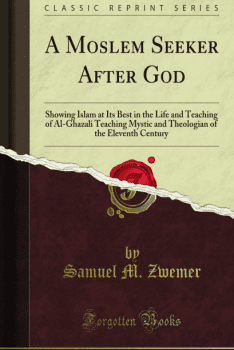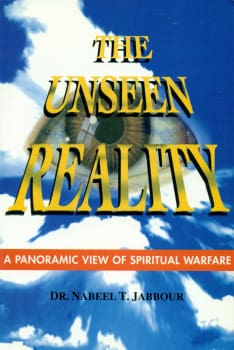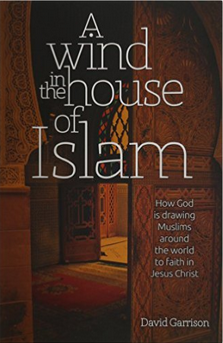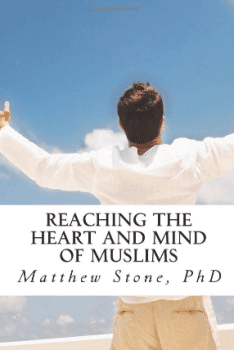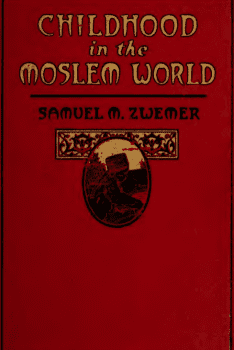The History of Apologetics: Timothy of Baghdad
I had the privilege of co-authoring (with Ed Smither) the chapter on Timothy of Baghdad (727-823) in the recently released book The History of Apologetics. In the chapter, we discuss the context of the Eastern Church under Muslim rule and the missiological strategy of the Eastern Patriarch as a potential model for 21st Century Muslim-Christian dialogue. Given the fact that Muslims and Christians make up more than half the world’s population, it is imperative to have peaceful dialogue without compromising the essentials of the Christian faith. This is something that Timothy of Baghdad did quite well in a two-day dialogue with the then leader of the Muslim world. Below are a few excerpts from the chapter.
Eastern Church under Muslim Rule
Timothy led the Christian community in Baghdad, where the Abbasid Caliphate—the global ruling center for Islam—was located. After the death of the Muslim prophet Muhammad (570–632), caliphs (spiritual, political, military, economic leaders) based in Medina led the Muslim community. From 661 to 750, the Ummayad Dynasty governed the Muslim world from Damascus. In 750 Caliph Mansur (714–775) built the city of Baghdad on the Tigris River and established the Abbasid Caliphate there. The Abbasids ruled from Baghdad for five hundred years.
Timothy began leading the church in Baghdad in 762, a little over a decade after the Abbasid Dynasty established its caliphate in the city. The Church of the East was eager to establish a presence in the city to keep an eye on what the Muslim leaders were doing. Many Christians served in various roles within the court of the caliph. Ironically, Church of the East Christians enjoyed more freedom under Muslim rule than they had under the recently defeated Byzantine Empire. As a result, Timothy secured permission from the caliph to send missionaries to the formerly Christian lands in Central and East Asia. Timothy used the Church of the East monasteries in Persia as training centers, where monks studied theology, philosophy, medicine, and linguistics to preach, care for physical needs, and translate Scripture.
Two-Day Dialogue with the Caliph
A guest in the court of the caliph and a leader of the minority faith community in Baghdad, Timothy treats his host with honor, referring to Caliph Mahdi as a “God loving king.” While Timothy confesses that there is only one God and one Lord Jesus Christ (1 Cor 8:6), his starting point with the caliph is the common belief held by Muslims and Christians of God’s eternal nature. From there, he addresses a number of questions, four of which we will focus on in this chapter: Is Jesus the Son of God? What is the Trinity? Did Christ die? Is Muhammad mentioned in the Bible?
Is Jesus the Son of God?
The caliph responds to Timothy’s opening proclamation about the eternal nature of God with a question: “O Catholicos [patriarch or bishop], a man like you who possesses all this knowledge and utters such sublime words concerning God, is not justified in saying about God that He married a woman from whom He begat a son.” This common objection from Muslims comes straight from the Qur’an: “The Creator of the heavens and earth! How could He have children when He has no spouse, when He created all things, and has full knowledge of all things?” (Surah 6:101).
Much to the Caliph’s surprise, Timothy agrees that it is impossible for God to have a literal child. He explains that whoever suggests that Christ is the offspring of a sexual union between God and Mary speaks blasphemy. Orthodox Christian teaching has never made such a claim.
The caliph has no problem with Christ being born of a virgin or with the angel Gabriel’s announcement of Christ’s birth, since the Qur’an affirms both (Surah 3:42–49; 19:16–26). But Mahdi’s concern is with Christ (and also the Holy Spirit) being divine. The Muslim leader is unwilling to accept that the Son and Spirit have eternal natures, insisting that they are created beings. He further denies the possibility that an eternal God can be born into space and time.
Timothy explains that Mary did not give birth to the divine Jesus. Interestingly, during the fifth century, the church wrestled with a similar question: Was Mary the God-bearer (theotokos) or the Christ-bearer (Christotokos)? Did Mary give birth to divinity? Timothy tries to clarify Christ’s identity by saying, “Christ is the Word-God, who appeared in the flesh for the salvation of the world.” Timothy may have chosen these titles (Christ and Word) because they are both used in the Qur’an to describe Jesus (Surah 3:45). Also, in the Church of the East, these were common ways to distinguish between Christ’s divine nature (Word, or logos) and his human nature (flesh). Using this framework, Timothy explains the unity of these natures in one person, saying, “He is one with His humanity, while preserving the distinction between His invisibility and His visibility, and between His Divinity and His humanity. Christ is one in His sonship, and two in the attributes of His natures.” In short, the Word is eternally begotten of the Father in his divine nature, while Christ is begotten from Mary in space-time in his human nature.
When the caliph pressed further and asked whether Timothy called Jesus the Son of God, Timothy responded, “O King, Christ is the Son of God, and I confess Him and worship Him as such. This I learned from Christ Himself in the Gospel and from the Books of the Torah and of the Prophets, which know Him and call Him by the name of ‘Son of God’ but not a son in the flesh as children are born in a carnal way, but an admirable and wonderful Son.”
Rooting his argument in the Christian Scriptures, Timothy asserts that the entire testimony of Scripture affirms Christ as the Son of God. His reference to Torah and the Prophets is important because it dispels the Muslim misconception that the Son of God is a New Testament idea that Christ’s disciples propagated.
Bewildered by Timothy’s attempt to explain the hypostatic union (Christ was fully God and fully man), Caliph Mahdi asks the bishop to further clarify. Timothy responds by explaining the nature of Christ through a series of metaphors and similes, including the image of the sun. Before offering these, Timothy gives the important caveat: “O our King, that He is a Son and one that is born, we learn it and believe in it, but we dare not investigate how He was born before the times, and we are not able to understand the fact at all, as God is incomprehensible and inexplicable in all things.” Confessing that Jesus is the Son of God and resting in the witness of Scripture, Timothy is content to relate to the caliph that this is ultimately a mystery that only God understands.
If you would like to read further on the background on Timothy of Baghdad and his responses to the other questions posed in this chapter (What is the Trinity? Did Christ die? Is Muhammad mentioned in the Bible?), you can purchase The History of Apologetics on Amazon.
For more on the history of Muslim-Christian relations, see Dr. Ed Smither’s article “Peaceful Martyr: The Life and Mission of St Francis of Assisi.“
